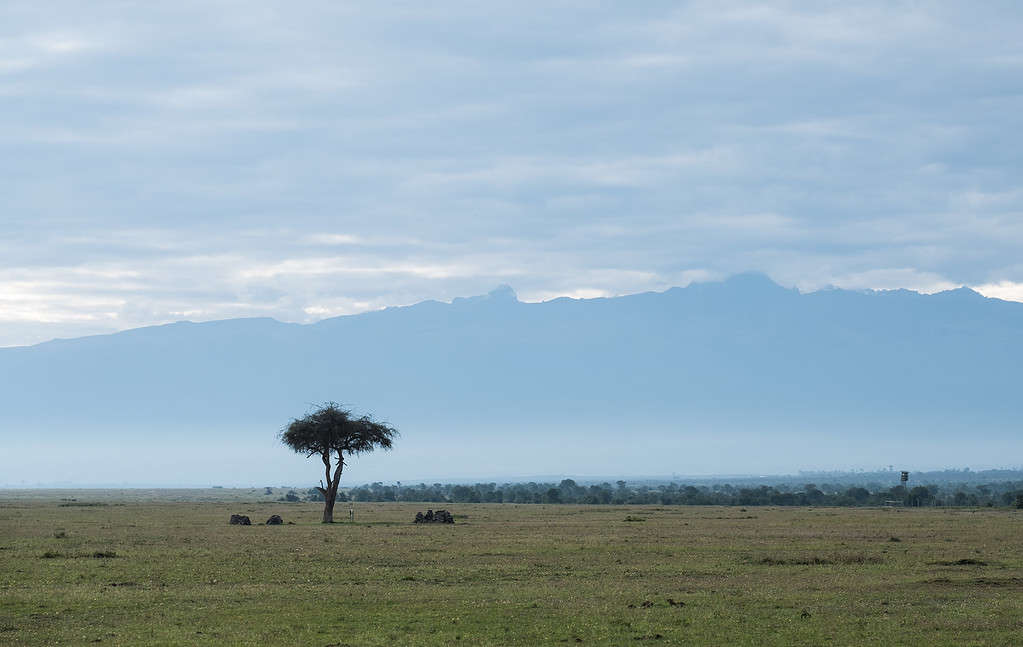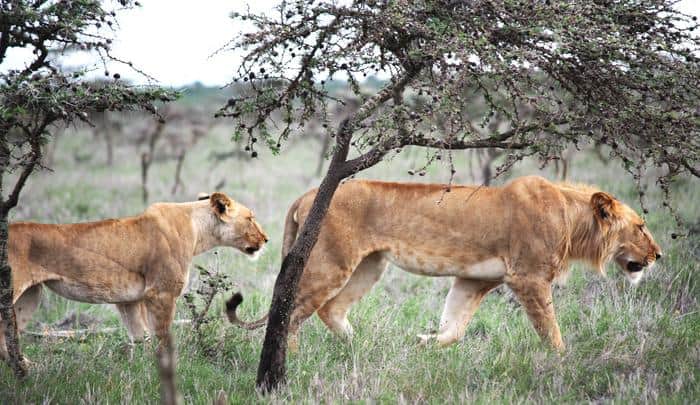An ancient Latin proverb says “Aquila non capit muscas” — eagles don’t hunt flies — meaning, of course, that important ones shouldn’t concern themselves with small, insignificant matters. But the lions in East Africa should concern themselves with the seemingly insignificant ants, because these ants are changing their lifestyles.
“These tiny invaders are cryptically pulling on the ties that bind an African ecosystem together, determining who is eaten and where,” says Todd Palmer, an ecologist and professor in the Department of Biology at the University of Florida.

Ants rule
The story starts with the acacia trees in the Ol Pejeta Nature Conservancy, an African wildlife area in central Kenya. Some of these acacia trees provide nectar and shelter to specific ant species, which in turn defend the tree against herbivores. The ants are fiercely territorial and aggressive, attacking and driving away herbivores that attempt to feed on the tree’s leaves. This defense mechanism is highly effective; the ants not only physically harm the herbivores but also release chemical signals that can deter other potential attackers.
This is not a new finding. It was observed in the early 2000s, although it came as a shock just how effective the ants could be.
“Much to our surprise, we found that these little ants serve as incredibly strong defenders and were essentially stabilizing the tree cover in these landscapes, making it possible for the acacia trees to persist in a place with so many big plant-eating mammals,” Palmer said.

But these ants are in trouble. Another species — an invasive one — called the “big-headed” ant (Pheidole megacephala) is destroying entire colonies of tree-protecting ants. This, in turn, sets off an entire chain of events that ends up influencing when and how lions can hunt.
Lions and dominos
Like dominos, this ant invasion affects one thing after the other. It leaves the acacia trees defenseless against herbivores — especially elephants. The elephants come in and eat the acacias — at five to seven times the rate observed in uninvaded areas. The lions, which are ambush predators, have no more trees to use for hiding. This reduced tree cover makes lions less successful at hunting and pushes them to find different areas to hunt in.
“We show that the spread of the big-headed ant, one of the globe’s most widespread and ecologically impactful invaders, has sparked an ecological chain reaction that reduces the success by which lions can hunt their primary prey,” the researchers note in the study.

This isn’t just a theorized mechanism — it has been confirmed observationally. Researchers have seen this happening in several places, and it’s a remarkable example of how one ecosystem change can cascade and send ripples throughout the entire system.
“Oftentimes, we find it’s the little things that rule the world,” Palmer said. “These tiny invasive ants showed up maybe 15 years ago, and none of us noticed because they aren’t aggressive toward big critters, including people. We now see they are transforming landscapes in very subtle ways but with devastating effects.”
The lions are coping
The lions, which are already endangered, are managing to cope with this by no longer focusing their attention on zebras. The zebras, of course, can see them much better on the approach given the lack of cover. Instead, they are targeting water buffalo. But this also isn’t the end of the story. Who knows what the lions’ changing strategy will mean for the ecosystem down the line?
“Nature is clever, and critters like lions tend to find solutions to the problems they face,” he said, “but we don’t yet know what could result from this profound switch in the lions’ hunting strategy. We are keenly interested in following up on this story.”
Also, these invasive ants aren’t just found in one place; they’re found in multiples places across the African savannas and beyond. You can find them in Florida and plenty of regions in the tropics and subtropics.
The study was published in Science Advances.






